the feed
Cyber Monday Deals
A lot of these sales are TODAY ONLY or end today, so I wanted to get these all listed in one single spot to make it easy for everyone to browse through.
Sorry, I know. Just like you, my inbox is getting hammer-b-slammered with Black Monday/ Cyber Monday Deals. I'm not going to send you another one, but instead, just list out my favorite deals - most of which I am spending all my dang money on myself. In full transperancy, I am an affiliate with many of these brands and do receive a small commission on purchases. However, I only promote brands and products I actually use and support. Also, I am not an affiliate for some of these brands, such as Quadlock, but absolutely love their gear.
Gregory Backpacks - You get to double down on your savings here!!! Take 25% off select packs with code: THANKS and then get an additional 15% off using code NICK15. See promotion details for more information. Promotion ends 11/28. click here
Front Runner Outfitters - My entire rig is outfitted by FRO and it's the jammy jam. The have a ton of "Get a Free THING with a purchase of this THING" kind of deals going on. click here
My Camera Gear - I put together a list of every single piece of camera gear I use and dropped it into an Amazon Store. For the most part, Amazon has matched any BF/CM deals I have seen by the direct manufacturer. click here
Peak Design - I use their camera backpacks, camera cubes, and travel tripod plus some accessories. click here
REI Cyber Monday Deals - Most items are on sale through Dec 5, but a few deals are available TODAY only. Also, REI members also get an extra 25% off one Outlet item using the code OUTNOV22 - but this code ends TODAY (11/28). click here
Caldera + Lab - These products have made me adopt a self-care routine and I love it. I use the Regimen and the new eye serum. Save 30% Sitewide right now. click here
Aventon E-Bikes - Save $200 off all E-bikes. I have the Adventure Step-Through and it's a beast. click here
IMG_2516
buklak_gregory_3d_hydro_3l_reservoir_ii_optic_blue_1578478540_b438
cropped-H4A5065@0.25x_FRO.jpg
_H4A2097_ad_1
DSC05946_1-min
cropped-E50A9729-1_nemo_edit-scaled-1.jpg
Our Top Adventure Travel Gear Picks from Arc'teryx
Adventure is life. Whether it is something planned or when plans go awry, life will always come at you in the form of adventure. Sometimes that's for the better, and at times notsomuch. You can control what you can, and roll with what you can't.
Half of my life is spent in the wilderness, most likely with a backpack full of my outdoor essentials. The other half is traveling around the world photographing resorts. These are pretty polar opposites and being prepared for each respectively is super important so I can focus on my creative process and enjoy where I am.
Adventure can live anywhere and having the right gear can go a long way. I'm a huge fan of Arc’teryx, both on the trail and in my everyday travel life. My 3-Day backpacking checklist has many of my favorite pieces that I highly recommend for anyone looking to flesh out their kit.
But let's talk about the days when we aren't on the trail - the everyday essentials. One of my absolute favorite brands, Arc'teryx, has you covered. Their versatile Coast Mountain-inspired collection of casual clothing is ready for every day and everything.
About Arc'teryx
Arc'teryx is a technical high-performance outerwear and equipment company located at the foot of the Coast Range mountains. They design and test their products in true wilderness, with an unwavering commitment to design, craftsmanship, and performance.
Now, to be honest, when I think of Arc'teryx, I think of 2 things: quality and costly. Their pieces can be quite expensive, but is it worth it? Hands down, without a doubt - a resounding yes! A quick feel of the fabrics that they use, or a glance at the attention to detail will tell you all you need to know. I have personally used a rain jacket from them for 12 years. It still performs like it did the day I bought it.
They have awesome customer service and stand by their products. In fact, they have something called the ReBird Service center in New York that repairs pieces on site (when possible). In their own words, this service center is one of the ways "to increase planetary repair and acts of reciprocity." That's pretty dang cool!
Arc'teryx Everyday Collection
With their Everyday Collection, you will find high-performing designs that are comfortable, practical, and can take you anywhere you want to go. Being prepared and comfortable while traveling or when experiencing new places is essential to maximizing the experience. Here are some of our favorite pieces for the days off the trail.
Arc'teryx Everyday Essentials for Men
The Eris Polo Shirt - Simple, refined, and smart – style requirements for travel and city. This shirt delivers precision Arc’teryx design and performance. Made from fabric blending the cool, natural comfort of organically grown cotton with the moisture-wicking performance of polyester.
- Provides comfort in warm weather
- Easily handles spontaneous urban adventures
- The regular fit and gusseted sides add freedom and comfort
- Built for daily wear
- Merrow stitch seams minimize chafing
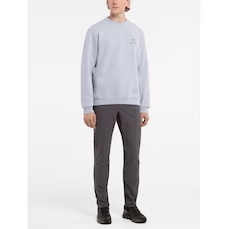
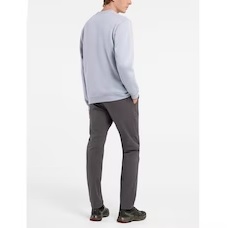
The Atlin Chino Pant - Designed with the Arc’teryx attention to detail and craft, the trim-fitting pant is a versatile option for relaxed city life, adventure travel, and casual weekends.
- Midweight cotton/nylon stretch canvas
- Comfortable, hardwearing fit
- Stretches for a clean fit that moves with the body
- Gusseted crotch
- Subtle articulation at the knees adds freedom of movement.
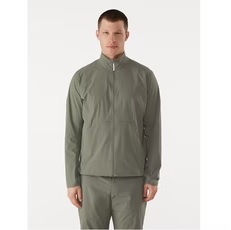
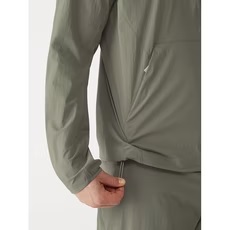
The Acrople Jacket - The ability to move effortlessly across varied landscapes and shifting conditions requires versatility. With its minimalist design and performance material, this jacket helps protect you from transitional weather and moves easily from mountain to camp to a local trail.
- Stretch nylon fabric cuts the wind’s chill while allowing enough airflow for comfort on the move
- DWR finish helps repel moisture
- Packability is key – this jacket is easy to bring anywhere.
Arc'teryx Everyday Essentials for Women
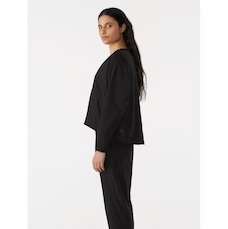
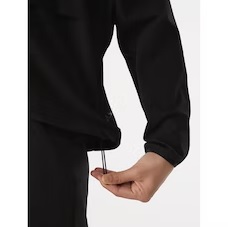
The Contenta Pullover - On a beautiful city day, take a break, step outside, and enjoy the sun. Made from 100% recycled content, the sustainable Diem™ polyester is silky soft, stretchy, airy, and cool, and delivers UPF 50+ protection.
- The boxy fit is flattering and comfortable
- Drawcord at the hem lets you shift the style
- Fabric resists wrinkles
- Stows in its own hidden zip pocket for easy packing
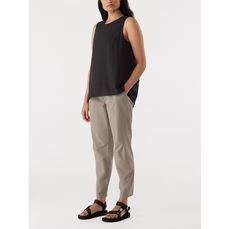
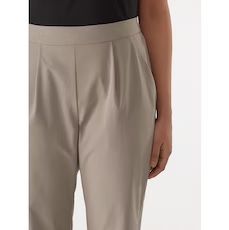
The Contenta Pant - Confident, sleek, contemporary, and comfortable - pure city style combined with serious freedom and comfort on the move.
- High waistband, tapered legs, and pleated front create a flattering streamlined silhouette
- Light stretch polyester - moves with you and holds the fit
- One of the slash hand pockets hides a zippered pocket that secures your smartphone, keys, or cash
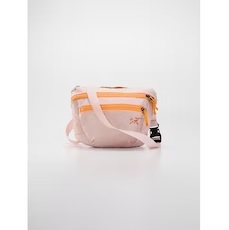
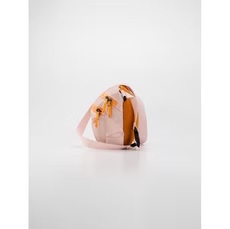
The Mantis 2 Waistpack - A simple, intelligently designed 2.5 litre pack sized for quick errands or traveling the globe.
- Rides comfortably on the waist or over the shoulder
- Carries your wallet, passport, and digital devices
- Zippered front pocket has a clip for keys and a range of internal pockets
- Easy-access stash pocket and zippered security pocket
- A smart, discreet pocket on the back panel stashes a smartphone or transit pass.
Head over to Arc’teryx to view their entire collection of everyday essentials and be prepared for anything.
Browse Women’s Everyday Collection
Royal Robbins Men's Alpine Mtn Pro Pant Review
The Alpine Mtn Pro Pant are a unique pair of pants that are super comfortable, and have some killer features. But there are some downsides.
Comfortable and durable with 4-way stretch – Super Comfortable trail pants rich with features.
When I first put on the Alpine Mtn Pro Pant, I thought that was it. I'm done. I have found the perfect pant. They are extremely comfortable with a fantastic fit, and feature a cinch ankle closure that so many outdoor men's pants neglect. These will be one of my favorite pants that will get a ton of use, just not on my more active adventure days. Keep reading to find out why.

Overall Verdict
Oh man did I love these at first. They actually made me reconsider Royal Robbins as an adventure brand when I first started wearing them. I had always considered them an outdoor lifestyle brand, but not anything that I would wear during active adventures. I would rock their gear at camp. But quickly I realized that they were missing some of my major points and therefore they are delegated to stay in Camp. That is in no way put-down, though, as they are one of my favorite pants for that occasion.
Pros: Super Comfortable, very versatile. Great Style & Fit. Ankle Cinch. Great Stretch and Mobility.
Cons: Do not breathe well. Not Great for warm weather. Fabric Stretches too much.
(I am 5'8" and 160lbs wearing a 30" Waist with a 30" Inseam). If you're an Amazon shopper, you're in luck because they do sell them.

Comfort & Mobility
Their stretch and articulation provide freedom to stride and climb, and their durability withstands miles of scrambling and bushwhacking. Meaning, that these things move with you no matter how aggressive you get. They are the opposite of restrictive which is their biggest strength, but also a downfall. Why? because they stretch pretty quickly and then lose a lot of their structure. I personally like slimmer-fit pants and tend to feel like I am swimming in more "regular" fit pants. Within an hour, these pants go from a relatively slim fit, straight into a loose regular fit.

Breathability
This is a downside to these pants, and for someone who runs hot like me, almost a dealbreaker. But please listen, I will say this about almost every single pant I wear. I run super hot. What can I say? I will say these do breathe better than most, but I feel like they tend to hold the heat in once it builds up more than I would like.
I do love that they have thought about ventilation features and have added in the ankle cinch. This is something that most other outdoor pants lack.

Versatility
From everyday casual wear to the office, these pants will fit right in. I have worn these in a professional setting and didn't look out of place at all. I love to wear these at camp, at a picnic or BBQ, or after a long adventurous day. With the ankle cinch, they pair best with some Chacos.
Water Resistance
The Alpine Mtn Pro Pant is water-resistant. They will shed a LIGHT rain, but that is really it. These will wet out relatively quickly. Once they do, you can expect them to become quite baggy and heavy. I found them also to be pretty slow to dry out or wick moisture.

Features of The Alpine Mtn Pro Pant
The Alpine Pro Pant has some unique features. My favorite feature is the ankle cinch which allows for some ankle breathing and also a different style look depending on how high you cuff them. They also feature a zip pocket just above the left knee which I find completely unusable. It is a strange placement that places whatever you put in that pocket on the knee as it bends. I could see it being used for soft items only - think face mask or lens wipes.

Value
The Alpine Pro pants aren't cheap. Royal Robbins is an elevated brand. They use premiere fabrics that cost more in the manufacturing process and therefore the price tag ends up being higher. They retail at $95 and in my experience, don't go on sale very often. I have only had them for about 4 months so I can't speak to the longevity of these, but if they are anything like other Royal Robbins pants, they will last for a long time.
Royal Robbins Alpine Mtn Pro Pant Conclusion
I do love these, just not for technical adventures. Because of their fit and stretchability, these will be one of my go-to pairs of pants for everyday wear - even in the business casual work environment. I absolutely love the ankle cinch feature and the initial fit but I am not a fan of how quickly they loosen up and retain heat.
If you're looking for a great looking, super comfortable and pretty durable pair of pants, these are spot on. If you need more of a technical pant, I would look elsewhere, like the Outdoor Research Ferrosi.
Want Remember This for Later?
Pin This to Your Favorite Board!




Prana Brion Pant Review for Men
The Prana Brion Pant may be the best all-around pant for the adventurous man, but do they check all of the boxes? Let's Find Out
The Prana Brion Pant is almost the best all-around pant for the adventurous man.
They are extremely comfortable, highly durable, and feature a simple, crossover design that makes them super versatile. These will look and feel perfect climbing at the local crag and still be stylish back at the pub you hit up afterward.

Overall Verdict
These are solid pants that deserve their place amongst the best of the best. Due to their versatility, I have owned a few pairs of these in multiple colors. Admittedly though, I don't wear these as much for adventures as I do for casual outings due to their biggest downfall for me: breathability. Keep in mind, I live in the desert, so heat is kind of inevitable. More on that below.
Pros: Super Comfortable, extremely versatile & durable. Great Style & Fit
Cons: Do not breathe well. Not Great for warm weather.
(I am 5'8" and 160lbs wearing a 30" Waist with a 30" Inseam). I'm a sucker for a sale, so I would recommend keeping an eye on these at Backcountry.com. They go on sale all the time. If you're more of an Amazon shopper, you're in luck because they do sell them.

Comfort & Mobility
Arguably the most comfortable outdoor pant on the market. The Brion is made from a comfortable and durable stretch fabric blend (97% nylon, 3% spandex), but it wears and feels like cotton. The stretch allows you to move freely without any constriction or pinch points.
As with most pants, these will loosen up as you wear them, especially on multiday trips when some sweating or any moisture is in play. The waist will hold, but the legs will flare out. This could be great for larger individuals, but for someone with a slimmer frame, it may feel like you are swimming a bit.

Breathability
This is the only major downside to these pants, and for someone who runs hot like me, almost a dealbreaker. They lack ventilation features that other outdoor pants have such as venting or roll-up cuff snaps. The fabric itself is a bit heavier and tends to trap the heat making the Prana Brion a great pant for cooler weather, but not so good for warm weather adventures.

Versatility
From everyday casual wear to the office, these pants will fit right in. I have worn these in a professional setting for years and didn't look out of place at all. This is the strongest asset to these - wherever you go, they will blend in and perform well (unless it's really hot). With the simple cuts, slimmer fit, and minimal pockets, the Prana Brion is one of the most versatile pants for the outdoor enthusiast who has an affinity for post-adventure beers at the local brewery.
Water Resistance
The Prana Brion are finished with a durable water repellent (DWR) coating which is meant to help shed water droplets before they soak into the fabric. I found that this coating does a fantastic job at minimal sprays or drops when the pants are new. After a few washes, the coating starts to break down, but even after a couple of years, these pants retain a bit of DWR protection. However, it's important to reiterate that I am speaking about light mists and minimal water. These pants will wet out and become quite heavy with any decent amount of water, so these are not the best in rainy conditions.

Features of The Prana Brion Pant
The Prana Brion is as basic as it gets when it comes to features. Aside from the gusseted crotch, belt waist loops, and 5 pockets, these are a simple design. I believe this was very intentional in order to appeal to a wider demographic.

Value
The Brion finds itself in the middle of the market with its price point. They are not necessarily cheap, but hefty enough to make your wallet a bit lighter than you would like. You can keep your peace of mind knowing that these pants do last a very long time. Some of mine are over 6 years old and look brand new (including these used in the photos).

Prana Brion Pant Conclusion
I love these pants, but I am not in love with them. WTF does that mean? They tick almost all of my important boxes (Fit, Versatility, Style, Value, Comfort), but with the poor ventilation and breathability, they don't take the cake for me. If Prana incorporated some breathing ports or a cuff system to let some airflow around the ankles, these would get closer to the adventure clothing checklist, but for now, they stay in my Let's-Get-Some-After-Trail-Beers while rocking my Brions!
Want Remember This for Later?
Pin This to Your Favorite Board!




Prana Brion Photo Gallery
How To Make Your Own Keto Trail Mix
Our Keto Trail Mix is an awesome tasty snack to enjoy on the go. It’s low carb, super crunchy, and loaded with healthy fats for energy.
Our Keto Trail Mix is an awesome tasty snack to enjoy on the go. It’s low carb, super crunchy, and loaded with healthy fats for energy. Mix and match the ingredients to make it your own!
Being active doesn't mean you have to sacrifice your diet. There are tons of options available in most major food stores that are keto-specific. You do need to watch for some "loose" and sneaky marketing techniques though. Always check the ingredients for yourself.
The main things to look out for on the ingredient list are sugar or other additives that could counteract the health quality of the foods. Keto is trendy right now and marketers are taking advantage of it by using misleading labels. Flip the package over and check through them yourself before deciding what you to buy.
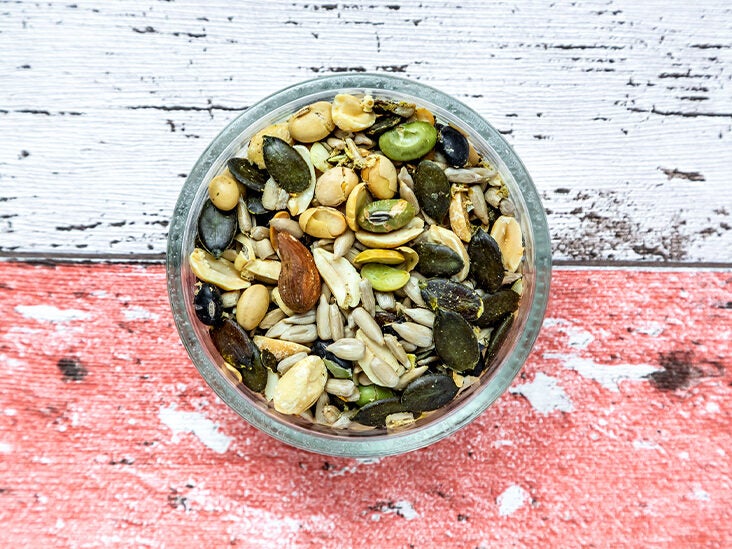
Keto Trail Mix and Net Carbs
The basic rule for staying in ketosis is to shoot for anywhere between 20-50g of carbs per day. This will vary depending on your weight and activity level. Those numbers are based on Net Carbs. Net carbs are the grams of total carbohydrates in a food minus its grams of total fiber. Because fiber is a carbohydrate that your body can't digest, it doesn't count against the number of carbs that can cause an insulin response.
Total Carbs – Total Fiber = Net Carbs
Sometimes a product will actually list the Net Carbs so you don't have to do any math, but again, make sure you are still checking the ingredients. Another soft rule is that less ingredients usually means healthier. Things such as sugar additives or preservatives can prevent your body from properly creating ketones.

What is Keto?
It is a high-fat, moderate-protein, and low-carb lifestyle that puts your body in a metabolic state called ketosis. Ketosis is when your body burns fat instead of carbohydrates as the primary fuel source. This is a much cleaner, more efficient way for your body to perform optimally.
How to Make Your Own Keto Trail Mix
To keep this as simple as possible, we are going to just throw a few ingredients into a bag, mix it up and head out to the trail. Trail mix is meant to be something quick and easy to pack along on adventures, keep us fueled up, and taste good! Mix it up any way that works for you and keep experimenting!
We created a web story that makes this super easy to follow along and get inspiration for making your own keto trail mix. ------>>>

Let's go Nuts!
Choose your nuts wisely! While nuts are always a great choice to add to your keto trail mix and the fat content is great for keto, you also need to consider the carbs. We love macadamia nuts because of their high fat content and low carb count. Pecans, Brazil Nuts, and Walnuts are nice as well. Below we’re counting down the best to worst nuts based on the amount of carbs in a 1oz portion.
Pecans: 1.1 grams
Pine Nuts: 2.7 grams
Brazil Nuts: 1.3 grams
Almonds: 2.9 grams
Macadamia Nuts: 1.5 grams
Peanuts: 3.8 grams
Walnuts: 1.9 grams
Pistachios: 5.8 grams
Hazelnuts: 2.3 grams
Cashews: 8.4 grams
Add Some Seeds
We love adding seeds to our keto trail mix for that extra crunch and texture. Additionally, seeds (and nuts) are packed with micronutrients such as vitamin E, B vitamins, and minerals (calcium, copper, iron, manganese, magnesium, potassium, selenium and zinc). Here is a list of how some of the most seeds rank according to net carb per 1 oz serving.
Flaxseed: 0.5 gram
Sunflower Seeds: 3.2 grams
Sachi Inchi Seeds: 0 grams
Sesame Seeds: 3.3 grams
Chia Seeds: 1.7 grams
Pumpkin Seeds: 3.9 grams

Chocolate Makes Everything Better!
That's right, we said chocolate! So not only is dark chocolate a suitable snack to have while on the keto diet (in moderation), it's also a great snack to have to help promote heart health. The key is to choose dark chocolate varieties with at least 70 percent cocoa solids to consume the most flavanols.
Our favorite is Lily's Chocolates. The net carbs fluctuate with different flavors, but we highly recommend the Salted Caramel Dark Chocolate. For the keto trail mix, it's best to stick to baking chips with no sugar added making them an awesome stevia sweetened addition.
Yes to Cheese, Please!
If you aren't a chocolate fan and don't want the stevia sweetness add some cheese snacks to the mix. Prepackaged snacks such as salty Moon Cheese Bites are perfect because they don't need to be refrigerated. If it is a short trip, you could definitely get away with chopping up some hard cheeses and tossing them in there.
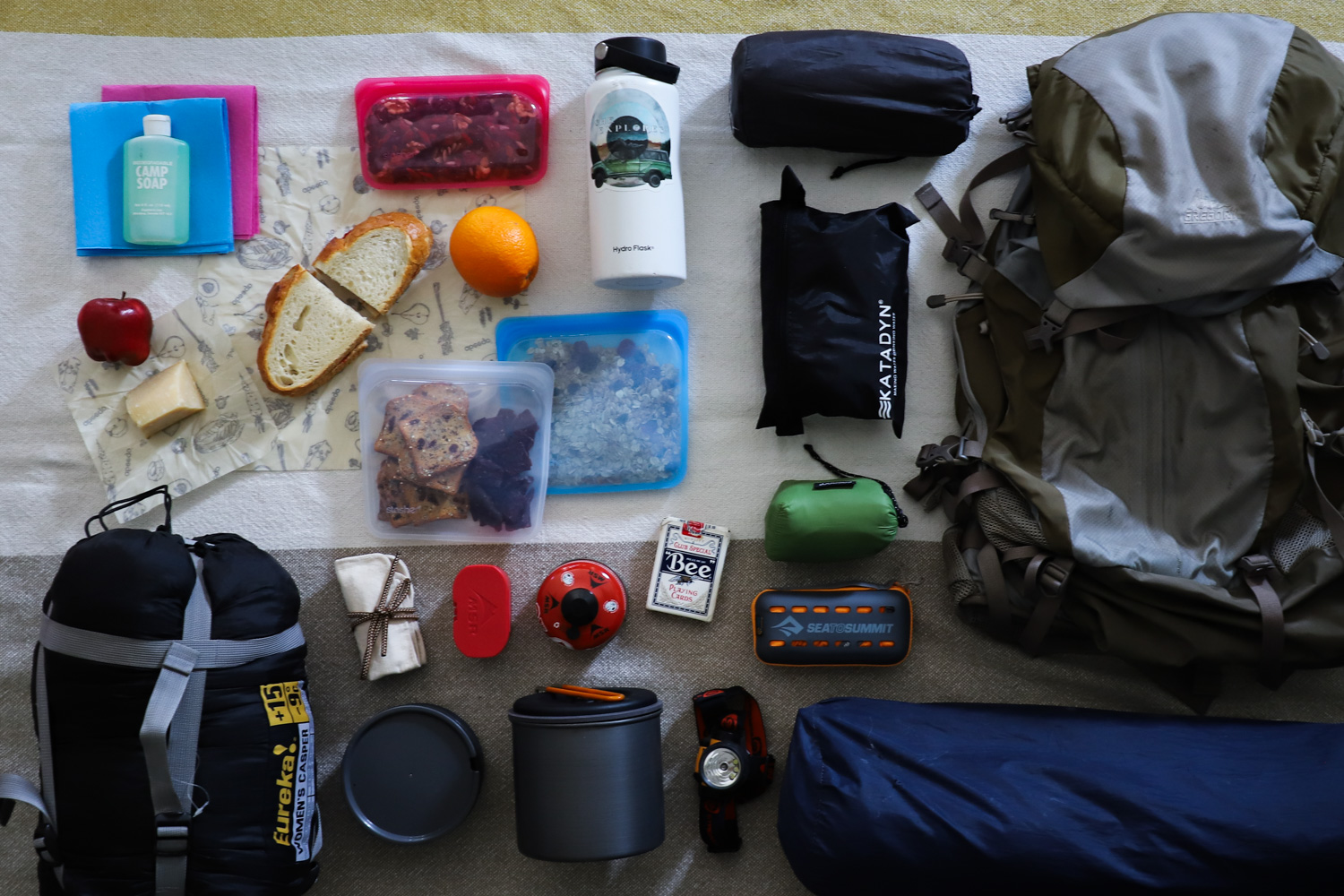
How to Store and Carry Your Keto Trail Mix
As avid supporters of our big beautiful world, we try to practice conscious packaging whenever we can to minimize our carbon footprint. We love using Stasher Snack Bags any chance we get! They are reusable snack-size silicone bags that are toxin-free and environmentally friendly. Stasher makes these in a variety of sizes so you can use them for trail mix, sandwiches (minus the bread because - keto), cooking ingredients in the cooler and more!
Want to Learn More About Keto?
Being a big part of our life, we have created a few articles about the health benefits of keto. One of the misconceptions about keto is that it is difficult to stick to. It's easy to get overwhelmed when you're first getting started, but we hope that some of our articles help break it down into nice, bit-sized pieces.
If you are into backpacking, some concessions must be made because the food options are limited. A lot of keto foods are perishable, but again, we tried to make it easy by putting a full guide to the best snacks that you can find at your local Target. Most of these items are available at other grocery stores as well.
Pack it Up, Pack it In
Don't forget anything ever again by using our Free Car Camping Checklist! Now that you have some delicious snacks ready to go, use this guide to pack up the car and make sure everything you need is right by your side!
7 Essential Keto Hiking Snacks You Need to Pack
7 Keto Hiking Snacks for you to take on your next adventure to help your metabolism, repair muscles, and boost immune systems.
It is possible to stay in ketosis while hiking. There are a ton of ways to keep your belly full and boots marching along without sacrificing your diet. We have compiled a simple list of keto hiking snacks that could be picked up at most local grocery stores. If not, there is always Amazon to the rescue.
Not only does this list focus on keeping all of the snacks low carb, but it also keeps a prioritized eye on protein which is crucial for a succesful and active hikers diet. High protein hiking snacks not only keep the h-angers at bay, but are super beneficial for your body. Protein helps hikers regulate their metabolism, repair tired muscles, and boost their immune systems. Plus, you're not yourself when you're hungry - I should coin that line. 😂

Keto Beef Jerky
Jerky made from beef is ideal for hiking. It's easy to carry and high in protein and one of the best high protein hiking snacks. The high salt content found in beef jerky is actually beneficial for hiking because it aids with hydration regulation. This keto hiking snack is packed with protein as well. Any other snack option can't compare to the quantity of protein you get from even a little strip. Protein is good for your body and provides an energy boost while also satisfying hunger rapidly.
The question is, is jerky good for you? The quick answer is that it is debatable. Jerky can be healthy if it suits your dietary objectives and the sort of product you select. Dried meat snacks can be a good source of protein when consumed as part of a balanced diet.
Jerky skeptics can be a little out of date. With additional MSG, nitrates, and chemical preservatives, many individuals warn that they're rich in sodium. The truth is that jerky is no longer made in this manner.
Sodium, on the other hand, is a valid cause for concern. Although sodium is a necessary nutrient, it is far too easy to consume too much in the average American diet. According to the FDA, the daily recommended dosage for the average individual is 2,400mg, which is just over a teaspoon of table salt.
How to Choose a Healthy Jerky
- Look for jerky with fewer than 500mg sodium content per serving
- Opt for brands that have no more than 5g of added sugar
Our Favorite Beef Jerky: People's Choice | Country Archer | Tillamook Country Smoker
Alternatives: Salmon Jerky | Turkey Jerky | Vegan Jerky | Mushroom Jerky

Salami or Sausage
Find the hard salami brands with zero carbs and a paper casing. This method tastes better and keeps fresh longer. Summer sausage is another great option.
Our Favorite Picks: Criminelli Whiskey Salami | Dukes Shorty Sausages

Hard Cheese Snacks (k)
Wrap the cheese to keep it from getting too greasy in your bag. You can also find cheese snacks that are freeze-dried and can be eaten like chips!
Another tasty one of our high protein hiking snacks that is easy to consume on the trail is string cheese. String cheese is high in protein and comes in a number of flavors, including Colby Jack, cheddar, and the most popular, mozzarella. It's great on its own or with meat or fish for a quick trail supper that doesn't require any preparation!
Cheese that is good for hiking typically has the following characteristics:
- It is a Firm or semi-firm cheese
- It has been aged
- It has a low moisture content
Our Favorite Picks: Horizon Organic | Mini Babybel

Keto Protein Bars
What hiking snack list would be complete without energy bars? Just keep in mind that some of these protein bars contain a lot of sugar alcohols, which each body processes differently; we've found that eating more than half a bar per day has a significant impact on our ability to hike up the hills we need to. We've identified a handful that keep the sugar alcohols to a minimum and allow us to go on with our hike.
Our Favorite Picks: Perfect Keto Bars | Quest Bars

Fatty's Beef Sticks (k)
There isn't much to say about these hefty sticks o'beef other than they are just what you need and want! They are the O.G. BIG meat snack. Packed with protein. Low in Sugar. Crafted with real ingredients. Cut out all of the marketing lingo and fancy packaging, Faty's serves up a fantastic chunk of meat, that's relatively healthy and keeps you moving on the trail!
Our Favorite Flavors: Jalapeno | Original | Pepperoni

Avocado
These packable veggies provide a much needed bit of green into your daily diet and are such a great source of fat (and low net carbs).
Avocados are another great way to get plant-based healthy fats in your diet. They are crammed with vitamins and minerals, such as vitamin B6, C, and E. Their anti-inflammatory properties will keep your body feeling fresh on mile ten.
To make this a trail-friendly snack, bring a pocket knife and a small spoon. Bring a small garbage bag with you to pack out the pits and peels. Although fruit scraps may appear innocent, they can attract wildlife and disrupt the local environment.
/GettyImages-121168161-58ae00945f9b58a3c90aa163.jpg)
Keto Trail Mix
We put together our own mix of dark chocolates, almonds, and macadamia nuts. It keeps it simple, delicious and nutritious.
– 2 squares (1/6 a bar) Theo's dark chocolate
– 1 oz almonds
– 1 oz Macadamia nuts
This mixture was crunchy, salty, and chocolatey, and it was exactly right. Place this on the outside of your bag to melt the chocolate on hot days, then massage the bag to mix the nuts and coat them in chocolate. You've got a chocolate-covered nuts snack if it cools down! Grab a spoon and dig in if it stays melted.
Keto Hiking Snacks Wrap-up
We hope this helps navigate the grocery aisles with ease when loading up before your next hiking adventure. This is a simplified list of keto hiking snacks that shold serve as a starting point or baseline for any adventures, including backpacking.
If you are not keto, or hiking on a cheat day, check out our 7 High Protein Hiking Snacks artcile to make sure you're still getting the proper nutrients.
An Easy Guide To Cleaning Your Water Bottle
Quality water bottles are great for a variety of activities. An eco-friendly alternative to disposable plastic water bottles, they are durable and leakproof and should last you a long time as long as you care for them properly
Quality water bottles are great for a variety of activities. An eco-friendly alternative to disposable plastic water bottles, they are durable and leakproof and should last you a long time as long as you care for them properly. Washing them immediately after use and letting them dry is the best method, but that doesn’t always happen. I’ve outlined a few ways to clean your water bottle below to keep it fresh and ready to go!
Why Should You Clean You Water Bottle?
Like any household dishware, keeping your eating surfaces, utensils and plateware helps reduce bacteria buildup and funk. Plus, it's just downright gross not to wash your dishes, so get with it dude. I used to live with a guy who only rinsed his dishes with water after using them. That's gross - the rest of us had no idea, and we were using the same nasty dishes for years.
On a larger scale, having a dedicated water bottle to keep with you will help reduce single-use plastics such as disposable water bottles. It goes a long way. I have a few water bottles of different sizes and materials that serve their purpose for certain things such as airplane travel, hiking, running errands, etc. This mean I use them, wash them, and then they sit. This brings us to the next question:
How Often Should You Clean Your Water Bottle?
The "correct" answer that I should give here, and the one that won't get any backlash in the comment section, is that you should wash your water bottle after each use. If that's your jam, then have at it. I don't think it is necessary unless you are using powdered or sugary mixes in your water bottle. These will build up bacteria much more quickly then plain water, so they will need to be cleaned more often.
After each use, I rinse with hot water and let air dry upside down. I give it the sniff test before or after each use. This is my gauge and it works for me. Now, again, this is for when I am only using water in my water bottle and when I am the only one using it. Who shares water bottles anyway? #couplegoals. Gross.
The Baking Soda Shake:
Our preferred method. It's the quickest, cheapest, and most effective method. Say hello to your new best friend, Baking Soda. Give you water bottle a good rinse, maybe wash it down with dish soap if you would like, and then let's get to the good stuff. Drop 1/4 cup of baking soda in. Fill the Nalgene 3/4 full with HOT water. Close the Lid and shake your heart out. Really get that thing shook up, and make sure you get the underside of the cap as well. Rinse it out real good and dry.
This is the ultimate cleaning method to get all of the funk out of your water bottle. I used to be very hesitant to put any kind of powdered drink, such as Ultima or any other electrolyte, in my water bottles, even though I love having something other then water to sip on when I'm adventuring. I don't need to stress it anymore. Using baking soda gets all that and then some out of my bottle. Give it a try.
Oh, and check out this web story we made to break it down.
Now let's get to the more straightforward methods.
Dishwasher:
Putting your water bottle in the dishwasher is the easiest and least time-consuming way to clean it. The majority of them can be washed in the dishwasher, but verify the manufacturer's instructions first. Because the lid may not tolerate the heat as well as the bottle itself, it should be placed on the upper rack away from the heating element. If your dishwasher's higher rack won't fit the size of your water bottle, don't worry; there are other cleaning solutions.
Soak in Warm, Soapy Water:
Allow the water bottle to soak in a sink with warm water and a little bit of mild dish soap. Shake it to disperse the soapy water, then rinse thoroughly and dry it.
There should be no soapy flavor left in the bottle if you use a tiny amount of mild soap. If you don't want to use soap, you can clean the bottle with warm water and lemon or warm water and baking soda.
This is especially useful if your bottle is solely used for water and other non-staining drinks. If you are like me and sometimes toss in some Ultima or other electrolyte drink mix, you will need to get a bit more aggressive in your cleaning. (hello, baking soda; see above)
Denture Cleaning Tablets
You can buy water bottle cleaning tablets or a new technology disinfectant glass cleaner if you want a professional cleaning product to ensure that your bottle is properly disinfected. Simply dissolve the cleaning tablets in water and allow them to dissolve in the bottle overnight. Give it a good shake before rinsing it thoroughly.
Shoppers tip: Water bottle cleaning tablets can be replaced with denture cleaning tablets at a lower cost. We use Polident Overnight Whitening Antibacterial Denture Cleanser Effervescent Tablets (man, that's a mouth full - see what I did there?). This works, but does leave a minty flavoring to your bottle unless you wash again after rinsing. Make sure you choose a brand-name denture-cleaning tablet with increased cleaning power to ensure it actually does what it says it's going to do.


Outdoor Brands that are 1% For The Planet Members - Our Favorites
Here is a list of our favorite brands that are members of 1% For The Planet. We encourage you to support and shop with these vendors, and sleep well with the knowledge that your purchase has a direct positive impact on the environment.
Here is a list of our favorite brands that are members of 1% For The Planet. We encourage you to support and shop with these vendors. You will sleep well with the knowledge that your purchase has a direct, positive impact on the environment.
UPDATED: JAN 2022
This is important. You can make a difference by just being conscious about where you spend your money for amazing gear to get you outdoors!!
What is 1% for The Planet?
One Percent for the Planet is an international organization whose members contribute at least one percent of their annual sales to environmental causes. Their mission is to "build, support, and activate an alliance of businesses financially committed to creating a healthy planet.
- Patagonia | A designer of outdoor clothing and gear for the silent sports: climbing, surfing, skiing and snowboarding, fly fishing, and trail running.
- Grayl | GRAYL® Water Purifiers make safe, clean drinking water anywhere on earth! Unrivaled ease, speed and versatility – simply Fill. Press. Drink.
- Klean Kanteen | High Quality, Top Performing, Insulated Water Bottles w/Klean Coat & Climate Lock. From Kids to Adults, Office to Backcountry, they have High Quality Products for Everyone!
- Tentsile | Escape damp & uneven ground for the most comfortable sleep you'll ever have in a tent. Perfect for families & adventurous campers.
- Peak Design | Everyday bags, travel bags, camera accessories. As leaders in carry, they design stuff that helps you transport and manage your stuff.
- Kammok | Kammok elevates the camping experience, designing and producing highly functional camping gear that unites people in the open air of the great outdoors.
- Wild Rye | Technical & beautiful outdoor apparel. Wild Rye crafts design-driven ski and mountain bike apparel for the modern outdoors woman. #playwild.
Toyota Tacoma Build: Black Rhino Warlord Wheels Are Awesome
Toyota Tacoma Build Update - The new Black Rhino Warlord truck rims live up to that aggressive name in more ways than one. Here's Why!
Black Rhino Warlords
I went with Black Rhino Warlord Wheels as my first big mod I did to the taco: replacing it's shoes (and legs, or ankles, or whatever you want to make a metaphor with).
Everything was based around these wheels: The Black Rhino Warlord Wheels. I wanted wheels that were different from most trucks I have seen. Something that stood out, looked badass AF, and possibly look even more rad when dirty. As bonus points, the color sheen actually matches the Quicksand from certain angles.
I also was in a big debate about whether to go all black. It's classic. It's gnar gnar, but everyone else is already doing it. I admit I was nervous because I had never seen these wheels in person - only online, but I hopped on the phone with www.wheelpros.com and drilled them about it! They were super helpful and I highly recommend going through them for your wheels!
The Wheels
For sizing, I went with the WARLORD 17X9 6X5.5 with -12MM offset in the MATTE BLACK WITH MACHINED DARK TINT LIP. this would step up my original wheel size from 16" to 17" giving me just a bit more clearance.
The Rubber
BF Goodrich 285/70R17 Tire, All-Terrain T/A KO2. I kept is as standard as possible. If it ain't broke don't fix it. These tires are tried and true, look aggressive and have a pretty good tread life.
The Lift
Bilstein B8 6112 Suspension Leveling Kit in the front and a set of Bilstein 5100 Series Shock Absorbers in the back on top of spacers. Just enough to level the Taco out and give me some more clearance. I will most likely be adding some leafs to the back because it sags under any type of weight, and I want to make sure the truck stays level when driving. This will also help to avoid that front-end duck down when braking hard.

Black Rhino Wheels supports www.stoprhinopoaching.com - very cool
Important Side Note about Black Rhino Wheels
Black Rhino Wheels was borne of a South African heritage, and is named after the tough and mighty Black Rhino, an icon of the African bush. Black Rhino Wheels is passionate about supporting conservation efforts that will help to protect the Rhino from extinction. They have donated over $60,000 to rhino conservation so far and formed a new partnership with StopRhinoPoaching.com and we donate a portion of our sales to them every quarter. You can find out more about their important and effective work here.
From the BR Site:
The new Black Rhino Warlord truck rims live up to that aggressive name in more ways than one. Start with the eight brawny spokes, bifurcated as they reach the thick, detailed lip. It’s a beefy, take-no-prisoners design, entirely in keeping with the spirit of stock and lifted trucks prepped for off highway gambols.
Black Rhino Warlords may look better the dirtier they get
Warload off-road wheels are aggressively sized, too, from 17x8, 17x9, 18x8, 18x9, and 20x9, all with oversized lips to provide a sturdy bead seat for the big fat tires offroaders prefer. Warlord truck wheels are available in 5, 6 and 8-lug bolt patterns, including5x110, 5x114, 6x120, 5x120 for the VW Amarok and the newer 6x130 pattern for Chevy Colorado, GMC Canyon and 8x180 for bigger GMC trucks. Offsets range from -23mm to +12mm, and there are versions available for Sprinter vans and CUVs.
Black Rhino Wheels mixing them blacks and browns
Black Rhino Wheels on the CA Sand Dunes
Warlord wheels are available in a striking matte gunmetal finish and in matte black with a machined dark-tint lip. Like all Black Rhino wheels, Warlord off-road rims are engineered for strength, durability and long-lasting good looks.
The Seven Principles of Leave No Trace
The Seven Principles of Leave No Trace provide an easily understood framework of minimum impact practices for anyone visiting the outdoors.
Although Leave No Trace has its roots in backcountry settings, the Principles have been adapted so that they can be applied anywhere — from remote wilderness areas, to local parks and even in your own backyard. They also apply to almost every recreational activity. Each Principle covers a specific topic and provides detailed information for minimizing impacts.
The Seven Principles are well established and widely known, but they are not static. The Leave No Trace Center for Outdoor Ethics continually examines, evaluates and reshapes the Principles. The Center’s Education Department conducts research — including publishing scholarly articles in independent journals — to ensure that the Principles are up to date with the latest insights from biologists, land managers and other leaders in outdoor education.
© 1999 by the Leave No Trace Center for Outdoor Ethics: www.LNT.org.
Principle 1: Plan Ahead and Prepare
Adequate trip planning and preparation helps backcountry travelers accomplish trip goals safely and enjoyably, while simultaneously minimizing damage to the land. Poor planning often results in miserable campers and damage to natural and cultural resources. Rangers often tell stories of campers they have encountered who, because of poor planning and unexpected conditions, degrade backcountry resources and put themselves at risk.
Why Is Trip Planning Important?
It helps ensure the safety of groups and individuals.
It prepares you to Leave No Trace and minimizes resource damage.
It contributes to accomplishing trip goals safely and enjoyably.
It increases self-confidence and opportunities for learning more about nature.
Seven Elements to Consider When Planning a Trip
Identify and record the goals (expectations) of your trip.
Identify the skill and ability of trip participants.
Gain knowledge of the area you plan to visit from land managers, maps, and literature.
Choose equipment and clothing for comfort, safety, and Leave No Trace qualities.
Plan trip activities to match your goals, skills, and abilities.
Evaluate your trip upon return note changes you will make next time.
Other Elements to Consider
Weather
Terrain
Regulations/restrictions
Private land boundaries
Average hiking speed of group and anticipated food consumption (leftovers create waste which leaves a trace!)
Group size (does it meet regulations, trip purpose and Leave No Trace criteria?)
Planning for one-pot meals and light weight snacks requires a minimum of packing and preparation time, lightens loads and decreases garbage. One-pot meals require minimal cooking utensils and eliminate the need for a campfire. Two backpack stoves can be used to cook all meals for large groups if you have two large pots (one large pot can be balanced on two stoves when quick heating is desired). Remember, a stove Leaves No Trace.
Most food should be removed from its commercial packing and placed in sealable bags before packing your backpacks. Sealable bags secure food and reduce bulk and garbage. Empty bags can be placed inside each other and packed out for reuse at home. This method can reduce the amount of garbage your group must pack out at the end of the trip and eliminate the undesirable need of stashing or burying unwanted trash.
Examples of Poor Trip Planning
A group that is inexperienced or unfamiliar with the geography of an area may put people at risk by traveling through areas susceptible to flash floods or along ridge tops vulnerable to lightning activity. Groups traveling arid lands often fail to carry adequate water or a way of purifying water from natural sources. Checking with local land managers and studying maps and weather conditions can contribute to a low-risk existence.
A poorly prepared group may plan to cook meals over a campfire only to discover upon arrival at their destination that a fire ban is in effect or that firewood is in scarce supply. Such groups often build a fire anyway breaking the law or impacting the land simply because they have not planned for alternatives. Fire bans and scarce wood supplies are signs that an area is experiencing the cumulative effects of heavy recreation use.
A group that has failed to develop good travel plans may be unable to travel as fast as expected. The terrain may be too steep or the trails too rugged. These groups often resort to setting up camp late at night, sometimes in an unsafe location. Poor campsite selection usually leads to unnecessary resource damage. In addition, the group may never even reach their planned destination.
© 1999 by the Leave No Trace Center for Outdoor Ethics: www.LNT.org.
Principle 2: Travel & Camp on Durable Surfaces
The goal of travel in the outdoors is to move through natural areas while avoiding damage to the land or waterways. Understanding how travel causes impacts is necessary to accomplish this goal. Travel damage occurs when surface vegetation or communities of organisms are trampled beyond recovery. The resulting barren area leads to soil erosion and the development of undesirable trails. Backcountry travel may involve travel over both trails and off-trail areas.
Travel on Trails
Land management agencies construct trails to provide identifiable routes that concentrate foot and stock traffic. Constructed trails are themselves an impact on the land; however, they are a necessary response to the fact that people travel through natural areas.
Concentrating travel on trails reduces the likelihood that multiple routes will develop and scar the landscape. It is better to have one well-designed route than many poorly chosen paths. Trail use is recommended whenever possible. Encourage travelers to stay within the width of the trail and not shortcut trail switchbacks (trail zigzags that climb hillsides).
Travelers should provide space for other hikers if taking breaks along the trail. The principles of off-trail travel should be practiced if the decision is made to move off-trail for breaks. Hikers in the same group should periodically stop to rest and talk. Avoid shouting to communicate while hiking. Loud noises usually are not welcome in natural areas.
Travel Off-trail
All travel that does not utilize a designed trail such as travel to remote areas, searches for bathroom privacy, and explorations near and around campsites is defined as off-trail. Two primary factors increase how off-trail travel affects the land: durability of surfaces and vegetation, and frequency of travel (or group size).
Durability refers to the ability of surfaces or vegetation to withstand wear or remain in a stable condition.
Frequency of use and large group size increase the likelihood that a large area will be trampled, or that a small area will be trampled multiple times.
Surface Durability
The concept of durability is an important one for all backcountry travelers to understand. The natural surfaces described below respond differently to backcountry travel.
Rock, sand and gravel: These surfaces are highly durable and can tolerate repeated trampling and scuffing. (However, lichens that grow on rocks are vulnerable to repeated scuffing).
Ice and snow: The effect of travel across these surfaces is temporary, making them good choices for travel assuming good safety precautions are followed and the snow layer is of sufficient depth to prevent vegetation damage.
Vegetation: The resistance of vegetation to trampling varies. Careful decisions must be made when traveling across vegetation. Select areas of durable vegetation, or sparse vegetation that is easily avoided. Dry grasses tend to be resistant to trampling. Wet meadows and other fragile vegetation quickly show the effects of trampling. Trampling ensures new travelers to take the same route and leads to undesirable trail derailment. As a general rule, travelers who must venture off-trail should spread out to avoid creating paths that encourage others to follow. Avoid vegetation whenever possible, especially on steep slopes where the effects of off-trail travel are magnified.
Living soil: Sometimes referred to as ͞cryptobiotic crust,͟ or ͞crypto,͟ living soil is often found in desert environments, and is extremely vulnerable to foot traffic. Living soil consists of tiny communities of organisms that appear as a blackish and irregular raised crust upon the sand. This crust retains moisture in desert climates and provides a protective layer, preventing erosion. One footstep can destroy this fragile soil. It is important to use developed trails in these areas. Travel across living soil should only be done when absolutely necessary. Walk on rocks or other durable surfaces if you must travel off-trail. In broad areas of living soil where damage is unavoidable it is best to follow in one another’s footsteps so the smallest area of crust is affected, exactly the opposite rule from travel through vegetation. Living soil is also extremely vulnerable to mountain bicycle travel.
Desert puddles and mud holes: Water is a preciously scarce resource for all living things in the desert. Don’t walk through desert puddles, mud holes or disturb surface water in any way. Potholes are also home to tiny desert animals.
Camp on Durable Surfaces
Selecting an appropriate campsite is perhaps the most important aspect of low-impact backcountry use. It requires the greatest degree of judgment and information, and often involves making trade-offs between minimizing ecological and social impacts. A decision about where to camp should be based on information about the level and type of use in the area, the fragility of vegetation and soil, the likelihood of wildlife disturbance, an assessment of previous impacts, and your party’s potential to cause or avoid impact.
Choosing a Campsite in High-use Areas
Avoid camping close to water and trails, and select a site which is not easily visible to others. Even in popular areas, the sense of solitude can be enhanced by screening campsites and choosing an out-of-the-way site. Camping 200 feet (70 adult steps) away from the water’s edge is recommended because it allows access routes for wildlife. Be sure to obey regulations related to campsite selection. Allow enough time and energy at the end of the day to select an appropriate site. Fatigue, bad weather, and late departure times are not acceptable excuses for choosing poor or fragile campsites. Generally, it is best to camp on sites that are so highly impacted that further careful use will cause no noticeable impact. In popular areas, these sites are obvious because they have already lost their vegetation cover. Also, it is often possible to find a site which naturally lacks vegetation, such as exposed bedrock or sandy areas.
For high-impact sites, tents, traffic routes and kitchen areas should be concentrated on already impacted areas. The objective is to confine impact to places which already show use and avoid enlarging the area of disturbance. When leaving camp, make sure that it is clean and appealing for other campers who follow.
Camping in Undisturbed Remote Areas
Pristine areas are usually remote, see few visitors and show no obvious impacts. Visit these special places only if you are committed to, and highly skilled in, Leave No Trace techniques. In pristine places, it is best to spread out tents, avoid repetitive traffic routes and move camp every night. The objective is to minimize the number of times any part of the site is trampled. In setting up camp, disperse tents and the kitchen on durable sites. Wear soft shoes around camp. Minimize activity around the kitchen and places where packs are stashed. The durable surfaces of large rock slabs make good kitchen sites. Watch where you walk to avoid crushing vegetation and take alternate paths to water. Minimize the number of trips to water by carrying water containers. Always check regulations, but camping 200 feet (70 adult steps) from water is a good rule of thumb.
girl walking on trail in silverton colorado
When breaking camp, take time to naturalize the site. Covering scuffed areas with native materials (such as pine needles), brushing out footprints, and raking matted grassy areas with a stick will help the site recover and make it less obvious as a campsite. This extra effort will help hide any indication where you camped and make it less likely that other backcountry travelers will camp in the same spot. The less often a pristine campsite is used the better chance it has of remaining pristine.
The most appropriate campsites in arid lands are on durable surfaces, such as rock and gravel, or on sites that have been so highly impacted further use will cause no additional disturbance. Previously impacted sites are obvious because they have already lost their vegetation cover or the rocky soils have been visibly disturbed. If choosing this type of site, make sure your spot is large enough to accommodate your entire group.
A pristine campsite, with no evidence of previous use, is appropriate in arid lands provided it is on a non-vegetated, highly resistant surface. Expenses of rock, gravel or sand are all excellent choices. It should never be necessary to camp on living soil, islands of vegetation or within the precious green ribbons of desert creeks or streams. Beware when camping on sandy river bottoms and areas susceptible to flash floods.
Cooking areas, tents and backpacks should be located on rock, sand or gravel. Consciously choose durable routes of travel between parts of your camp so that connecting trails do not develop. Vary your routes since the objective is to minimize the amount of trampling and compaction on any specific part of the campsite. Limit your stay to no more than two nights. Never scrape away or clean sites of organic litter like leaves, and always minimize the removal of rocks and gravel. The organic litter will help to cushion trampling forces, limit the compaction of soils, release plant nutrients and reduce the erosive forces of rainfall. Disturbing the lichen-coated and varnished rocks known as desert pavement can leave a visible impact for hundreds of years. Once overturned, these rocks are difficult to replace and the lichens and varnish will not grow back within our lifetime.
Camping in River Corridors
River corridors are narrow strips of land and water with little room to disperse human activities. Campsites are often designated. It is generally best to camp on established sites located on beaches, sandbars or non-vegetated sites below the high-water line.
Principle 3: Dispose of Waste Properly
The Center encourages outdoor enthusiasts to consider the impacts that they leave behind, which will undoubtedly affect other people, water and wildlife.
Human Waste
Proper disposal of human waste is important to avoid pollution of water sources, avoid the negative implications of someone else finding it, minimize the possibility of spreading disease and maximize the rate of decomposition.
In most locations, burying human feces in the correct manner is the most effective method to meet these criteria. Solid human waste must be packed out from some places, such as narrow river canyons. Land management agencies can advise you of specific rules for the area you plan to visit.
There are several EPA-approved, commercially produced pack-out systems available that are easy to use and sanitary for backpacking/hiking use. Other systems (including reusable, washable toilet systems) are bulkier and may be better suited for paddling/rafting trips. As more and more people enjoy parks and protected areas every year, packing out human waste is likely to become a more common practice to ensure long-term sustainability of our shared lands. In some environments, particularly in fragile alpine settings, land managers may require that all solid human waste must be packed out.
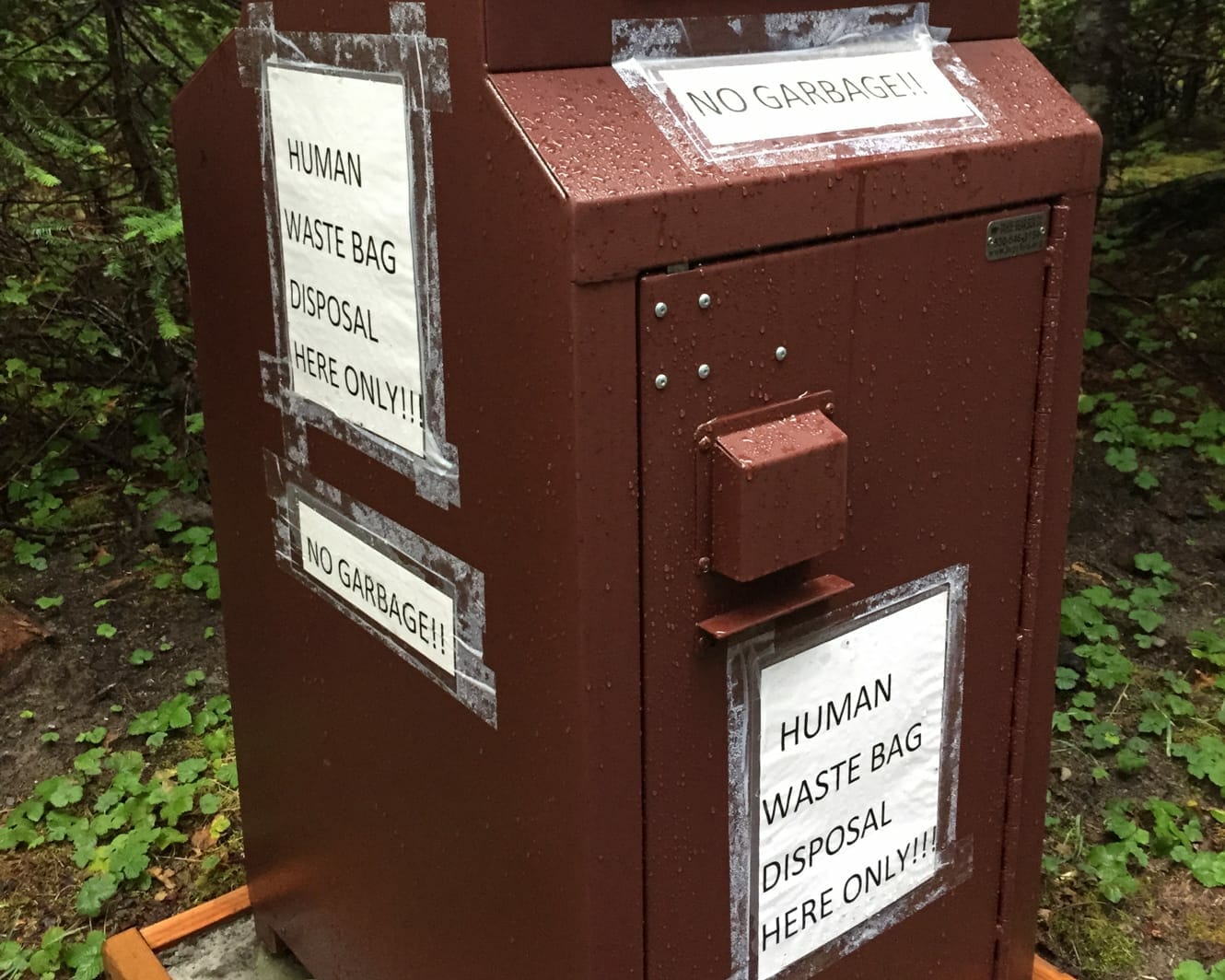
Cat Holes
Cat holes are the most widely accepted method of waste disposal. Locate cat holes at least 200 feet (about 70 adult paces) from water, trails and camp. Select an inconspicuous site where other people will be unlikely to walk or camp. With a small garden trowel, dig a hole 6-8 inches deep and 4-6 inches in diameter. The cat hole should be covered and disguised with natural materials when finished. If camping in the area for more than one night, or if camping with a large group, cat hole sites should be widely dispersed.
Select a cat hole site far from water sources, 200 feet (approximately 70 adult paces) is the recommended range.
Select an inconspicuous site untraveled by people. Examples of cat hole sites include thick undergrowth, near downed timber or on gentle hillsides.
If camping with a group or if camping in the same place for more than one night, disperse the cat holes over a wide area; don’t go to the same place twice.
Try to find a site with deep organic soil. This organic matter contains organisms which will help decompose the feces. (Organic soil is usually dark and rich in color.) Refer to the jars used to demonstrate decomposition. The desert does not have as much organic soil as a forested area. (See number 2 under Digging a Cat hole below.)
If possible, locate your cat hole where it will receive maximum sunlight. The heat from the sun will aid decomposition.
Choose an elevated site where water would not normally go during runoff or rain storms. The idea here is to keep the feces out of water. Over time, the decomposing feces will percolate into the soil before reaching water sources.
Follow these steps to dig a cat hole.
A small garden trowel is the perfect tool for digging a cat hole.
Dig the hole 6-8 inches deep (about the length of the trowel blade) and 4-6 inches in diameter. In a hot desert, human waste does not biodegrade easily because there is little organic soil to help break it down. In the desert, the cat hole should be only 4-6 inches deep. This will allow the heat and sun to hasten the decay process.
When finished, the cat hole should be filled with the original dirt and disguised with native materials.
Avoid areas where water visibly flows, such as sandy washes, even if they are dry at the moment. Select a site that will maximize exposure to the sun in order to aid decomposition. Because the sun’s heat will penetrate desert soils several inches, it can eventually kill pathogens if the feces are buried properly. South-facing slopes and ridge tops will have more exposure to sun and heat than other areas.
Latrines
Though cat holes are recommended for most situations, there are times when latrines may be more applicable, such as when camping with young children or if staying in one camp for longer than a few nights. Use similar criteria for selecting a latrine location as those used to locate a cat hole. Since this higher concentration of feces will decompose very slowly, location is especially important. A good way to speed decomposition and diminish odors is to toss in a handful of soil after each use. Ask your land manager about latrine-building techniques.
Toilet Paper
Use toilet paper sparingly and use only plain, white, non-perfumed brands. Toilet paper must be disposed of properly! It should either be thoroughly buried in a cat hole or placed in plastic bags and packed out. Natural toilet paper has been used by many campers for years. When done correctly, this method is as sanitary as regular toilet paper, but without the impact problems. Popular types of natural toilet paper include stones, vegetation and snow. Obviously, some experimentation is necessary to make this practice work for you, but it is worth a try! Burning toilet paper in a cat hole is not recommended.
Toilet Paper in Arid Lands: Placing toilet paper in plastic bags and packing it out as trash is the best way to Leave No Trace in a desert environment. Toilet paper should not be burned. This practice can result in wildfires.
Tampons
Proper disposal of tampons requires placing them in plastic bags and packing them out. Do not bury them because they don’t decompose readily and animals may dig them up. It will take a very hot, intense fire to burn them completely—campfires are not an adequate solution.
Urine
Urine has little direct effect on vegetation or soil. In some instances, urine may draw wildlife which are attracted to the salts. They can defoliate plants and dig up soil. Urinating on rocks, pine needles, and gravel is less likely to attract wildlife. Diluting urine with water from a water bottle can help minimize negative effects.
Other Forms of Waste
“Pack it in, Pack it out” is a familiar mantra to seasoned wildland visitors. Any user of recreation lands has a responsibility to clean up before he or she leaves. Inspect your campsite and rest areas for trash or spilled foods. Pack out all trash and garbage.
Plan meals to avoid generating messy, smelly garbage. It is critical to wildlife that we pack out kitchen waste, such as bacon grease and leftovers. Don’t count on a fire to dispose of it. Garbage that is half-burned or buried will still attract animals and make a site unattractive to other visitors.
Overlooked trash is litter, and litter is not only ugly—it can also be deadly. Plastic bags, cigarette butts, fishing line and other trash can be harmful to our environment when not properly disposed of.
Carry plastic bags to haul your trash (and maybe someone else’s). Before moving on from a camp or resting place, search the area for micro-trash such as bits of food and trash, including organic litter like orange peels or pistachio shells. Invite the kids in your group to make a game out of scavenging for human sign.
Wastewater
To wash yourself or your dishes, carry water 200 feet away from streams or lakes. Scatter strained dishwater. Hand sanitizers that don’t require rinsing allow you to wash your hands without worrying about wastewater disposal.
For dishwashing, use a clean pot or other container to collect water, and take it to a wash site at least 200 feet away from water sources. This lessens trampling of lakeshores, riverbanks and springs, and helps keep soap and other pollutants out of the water. Use hot water, elbow grease, and soap if absolutely necessary. Strain dirty dishwater with a fine mesh strainer before scattering it broadly. Do this well away from camp, especially if bears are a concern. Pack out the contents of the strainer in a plastic bag along with any uneaten leftovers.
In developed campgrounds, food scraps, mud and odors can accumulate where wastewater is discarded. Contact your campground host for the best disposal practices and other ways to Leave No Trace at your campsite.
Soaps and Lotions
Soap, even when it’s biodegradable, can affect the water quality of lakes and streams, so minimize its use. Always wash yourself well away from shorelines (200 feet), and rinse with water carried in a pot or jug. This allows the soil to act as a filter. Where fresh water is scarce, think twice before swimming in creeks or potholes. Lotion, sunscreen, insect repellent and body oils can contaminate these vital water sources.
Principle 4: Leave What You Find
Allow others a sense of discovery by leaving rocks, plants, archaeological artifacts and other objects of interest as you find them.
Minimize Site Alterations
Leave areas as you found them. Do not dig trenches for tents or construct lean-tos, tables, chairs or other rudimentary improvements. If you clear an area of surface rocks, twigs or pine cones replace these items before leaving. For high-impact sites, it is appropriate to clean up the site and dismantle inappropriate user-built facilities, such as multiple fire rings and constructed seats or tables. Consider the idea that good campsites are found and not made.
In many locations, properly located and legally constructed facilities, such as a single fire ring, should be left in place. Dismantling them will cause additional impact because they will be rebuilt with new rocks and thus impact a new area. Learn to evaluate all situations you find.
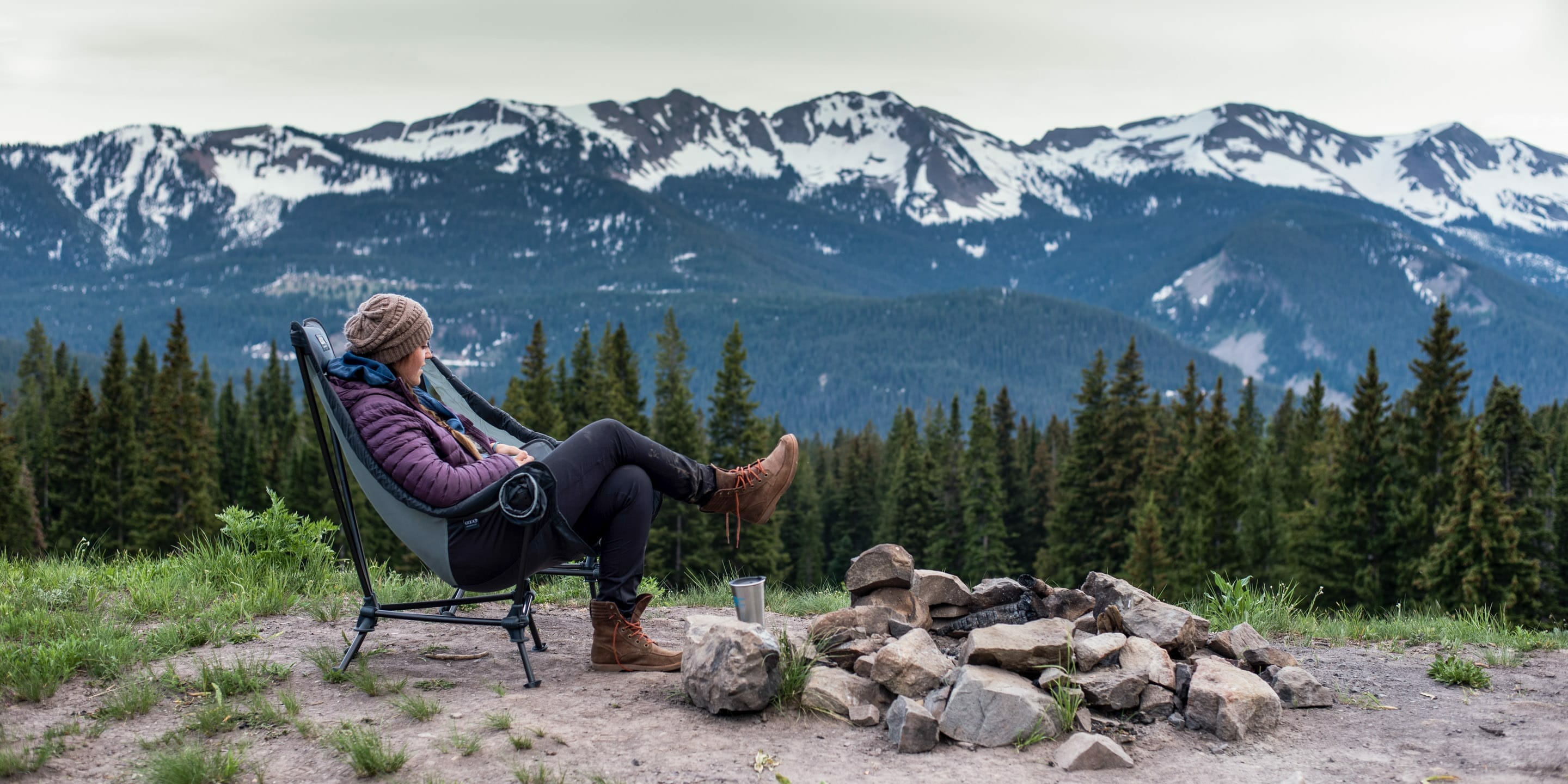
Avoid Damaging Live Trees and Plants
Avoid hammering nails into trees for hanging things, hacking at them with hatchets and saws, or tying tent guy lines to trunks—thus girdling the tree. Carving initials into trees is unacceptable. The cutting of boughs for use as sleeping pads creates minimal benefit and maximum impact. Sleeping pads are available at stores catering to campers.
Picking a few flowers does not seem like it would have any great impact and, if only a few flowers were picked, it wouldn’t. But, if every visitor thought “I’ll just take a few,” a much more significant impact might result. Take a picture or sketch the flower instead of picking it. Experienced campers may enjoy an occasional edible plant, but they are careful not to deplete the surviving vegetation or disturb plants that are rare or are slow to reproduce.
Leave Natural Objects and Cultural Artifacts
Natural objects of beauty or interest such as antlers, petrified wood or colored rocks add to the mood of the backcountry and should be left so others can experience a sense of discovery. In national parks and many other protected places, it is illegal to remove natural objects.
The same ethic is applicable to cultural artifacts found on public lands. Cultural artifacts are protected by the Archaeological Resources Protection Act. It is illegal to remove or disturb archeological sites, historic sites or artifacts such as pot shards, arrowheads, structures and even antique bottles found on public lands.
Principle 5: Minimize Campfire Impacts
Fires vs. Stoves: The use of campfires, once a necessity for cooking and warmth, is steeped in history and tradition. Some people would not think of camping without a campfire. Campfire building is also an important skill for every camper. Yet, the natural appearance of many areas has been degraded by the overuse of fires and an increasing demand for firewood. The development of lightweight efficient camp stoves has encouraged a shift away from the traditional fire for cooking. Stoves have become essential equipment for minimum-impact camping. They are fast, flexible and eliminate firewood availability as a concern in campsite selection. Stoves operate in almost any weather condition—and they Leave No Trace.
Should You Build a Fire?
The most important consideration when deciding to use a fire is the potential damage to the backcountry.
What is the fire danger for the time of year and the location you have selected?
Are there administrative restrictions from the agency that manages the area?
Is there sufficient wood so its removal will not be noticeable?
Does the harshness of alpine and desert growing conditions for trees and shrubs mean that the regeneration of wood sources cannot keep pace with the demand for firewood?
Do group members possess the skills to build a campfire that will Leave No Trace?
Lessening Impacts When Campfires Are Used
Camp in areas where wood is abundant if building a fire. Choose not to have a fire in areas where there is little wood at higher elevations, in heavily used areas, or in desert settings. A true Leave No Trace fire shows no evidence of having been constructed.
Existing Fire Rings
The best place to build a fire is within an existing fire ring in a well-placed campsite. Keep the fire small and burning only for the time you are using it. Allow wood to burn completely to ash. Put out fires with water, not dirt. Dirt may not completely extinguish the fire. Avoid building fires next to rock outcrops where the black scars will remain for many years.
Mound Fire
Construction of a mound fire can be accomplished by using simple tools: a garden trowel, large stuff sack and a ground cloth or plastic garbage bag.
To build this type of fire:
Collect mineral soil, sand or gravel from an already disturbed source. The root hole of a toppled tree is one such source. Lay a ground cloth on the fire site and then spread the soil into a circular, flat-topped mound at least 3 to 5 inches thick. The thickness of the mound is critical to insulate the ground below from the heat of the fire. The ground cloth or garbage bag is important only in that it makes cleaning up the fire much easier. The circumference of the mound should be larger than the size of the fire to allow for the spreading of coals. The advantage of the mound fire is that it can be built on flat exposed rock or on an organic surface such as litter, duff or grass.
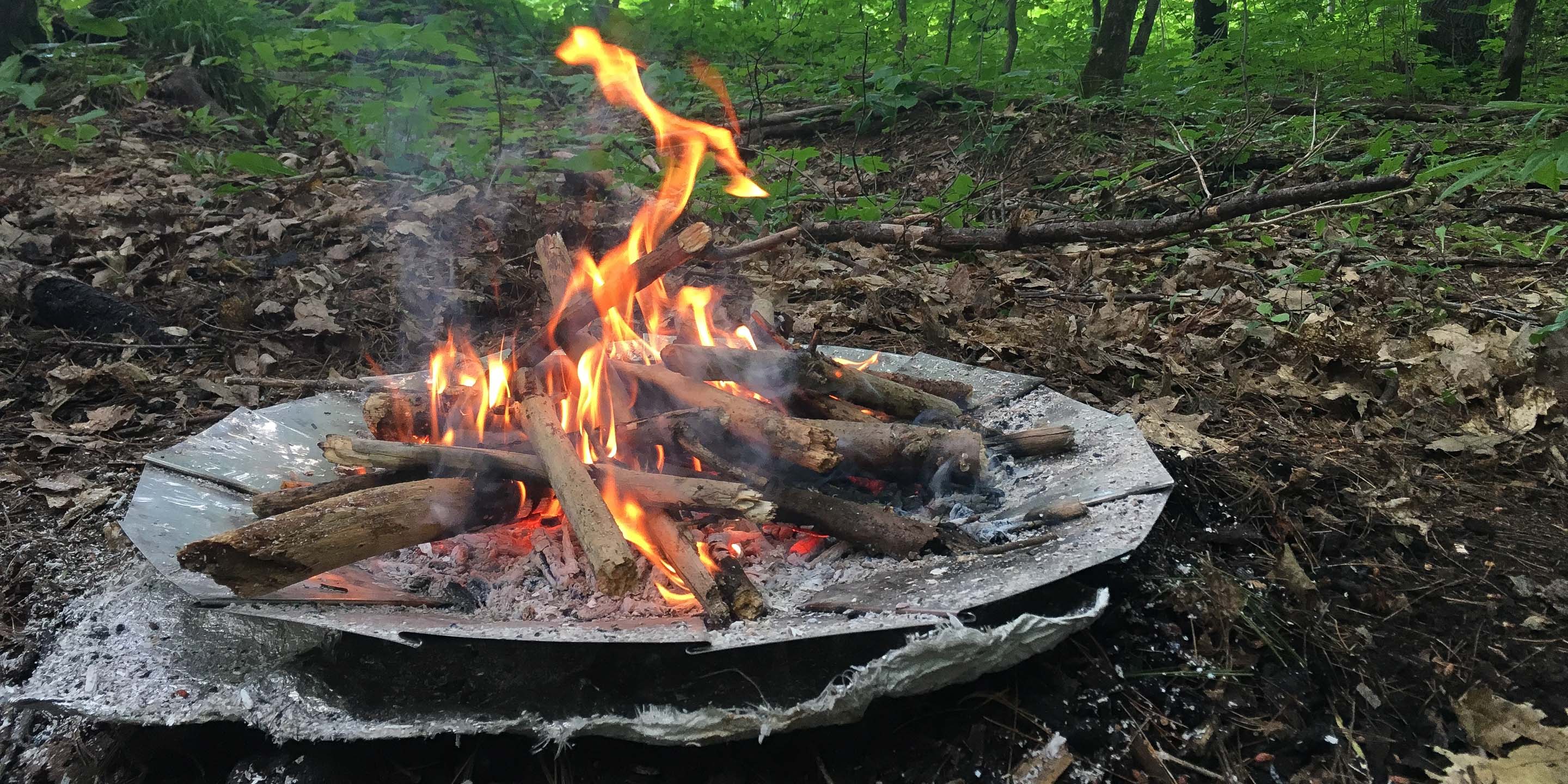
Fire Pans
A fire pan is another good alternative to a traditional campfire. Metal oil drain pans and some backyard barbecue grills make effective and inexpensive fire pans. The pan should have at least three-inch-high sides. It should be elevated on rocks or lined with mineral soil so the heat does not scorch the ground.
Firewood and Cleanup
Standing trees, dead or alive, are home to birds and insects, so leave them intact. Fallen trees also provide bird and animal shelter, increase water holding capacity of the soil, and recycle nutrients back into the environment through decomposition.
Stripping branches from standing or fallen trees detracts from an area’s natural appearance.
Avoid cutting or breaking branches from standing or downed trees. Dead and down wood burns easily, is easy to collect and leaves less impact.
Use small pieces of wood, no larger than the diameter of an adult wrist, that can be broken with your hands.
Gather wood over a wide area away from camp. Use dry driftwood on rivers and seashores.
Don’t bring firewood from home. Either buy it from a local source or gather it responsibly where allowed.
Burn all wood to white ash, grind small coals to ash between your gloved hands, thoroughly soak with water, and scatter the remains over a large area away from camp. Ashes may have to be packed out in river corridors.
Replace soil where you found it when cleaning up a mound or pan fire.
Scatter unused wood to keep the area as natural looking as possible.
Pack out any campfire litter. Plastic items and foil-lined wrappers should never be burned in a camp fire.
Safety
Provide adequate supervision for young people when using stoves or fires.
Follow all product and safety labels for stoves.
Use approved containers for fuel.
Never leave a fire unattended.
Keep wood and other fuel sources away from fire.
Thoroughly extinguish all fires.
Principle 6: Respect Wildlife
Learn about wildlife through quiet observation. Do not disturb wildlife or plants just for a “better look.” Observe wildlife from a distance so they are not scared or forced to flee. Large groups often cause more damage to the environment and can disturb wildlife so keep your group small. If you have a larger group, divide into smaller groups if possible to minimize your impacts.
Quick movements and loud noises are stressful to animals. Travel quietly and do not pursue, feed or force animals to flee. (One exception is in bear country where it is good to make a little noise so as not to startle the bears.) In hot or cold weather, disturbance can affect an animal’s ability to withstand the rigorous environment. Do not touch, get close to, feed or pick up wild animals. It is stressful to the animal, and it is possible that the animal may harbor rabies or other diseases.
Sick or wounded animals can bite, peck or scratch and send you to the hospital. Young animals removed or touched by well-meaning people may cause the animals parents to abandon them. If you find sick animals or animals in trouble you should notify a game warden.
Considerate campers observe wildlife from afar, give animals a wide berth, store food securely and keep garbage and food scraps away from animals. Remember that you are a visitor to their home.
Allow animals free access to water sources by giving them the buffer space they need to feel secure. Ideally, camps should be located 200 feet or more from existing water sources. This will minimize disturbance to wildlife and ensure that animals have access to their precious drinking water. By avoiding water holes at night, you will be less likely to frighten animals because desert dwellers are usually most active after dark. With limited water in arid lands, desert travelers must strive to reduce their impact on the animals struggling for survival.
Washing and human waste disposal must be done carefully so the environment is not polluted, and animals and aquatic life are not injured. Swimming in lakes or streams is okay in most instances—but in deserts and other very arid areas it’s best to leave scarce water holes undisturbed and unpolluted so animals may drink from them.
Principle 7: Be Considerate of Other Visitors
One of the most important components of outdoor ethics is to maintain courtesy toward other visitors. It helps everyone enjoy their outdoor experience. Many people come to the outdoors to listen to nature. Excessive noise, uncontrolled pets and damaged surroundings take away from the natural appeal of the outdoors.
The feeling of solitude, especially in open areas, is often enhanced when group size is small, contacts are infrequent and behavior is unobtrusive. To maximize your feeling of privacy, avoid trips on holidays and busy weekends or take a trip during the off season.
Technology continues to shape the outdoor experience. Personal preferences range from high-tech outdoor travelers, who might want to listen to music and collect images on their devices, to an anti-tech perspective that favors a minimal use of gadgets. Different strokes for different folks, but be sure to thoroughly consider how your experience is affecting the way someone else enjoys the outdoors. For example, earbuds may be a less obtrusive way to enjoy music than external speakers, but if you have the volume turned so high that you can’t hear someone behind you who wants to pass, your personal preference for music will negatively affect other people.
The general assumption on a narrow trail is that hikers headed downhill will step aside to allow an uphill foot traveler to easily pass. In many places, there’s an expectation that hikers will yield to equestrians, and that bicyclists will yield to both hikers and equestrians on trails. Stay in control when mountain biking. Before passing others, politely announce your presence and proceed with caution.
Groups leading or riding pack stock have the right-of-way on trails. Hikers and bicyclists should move off the trail to the downhill side. Talk quietly to the riders as they pass, since horses are spooked easily.
Take rest breaks on durable surfaces well off the designated trail. Keep in mind that visitors to seldom used places require an extra commitment to travel quietly and lightly on the land. When selecting a campsite, choose a site where rocks or trees will screen it from others view. Keep noise down in camp so as not to disturb other campers or those passing by on the trail.
Bright clothing and equipment, such as tents, that can be seen for long distances are discouraged. Especially in open natural areas, colors such as day-glow yellow may contribute to a crowded feeling; consider earth-toned colors (ie. browns and greens) to lessen visual impacts. Keep pets under control at all times — Bowser is not in the wildlife category. Please pick up dog feces from camps and trails. Some areas prohibit dogs or require them to be on a leash at all times.
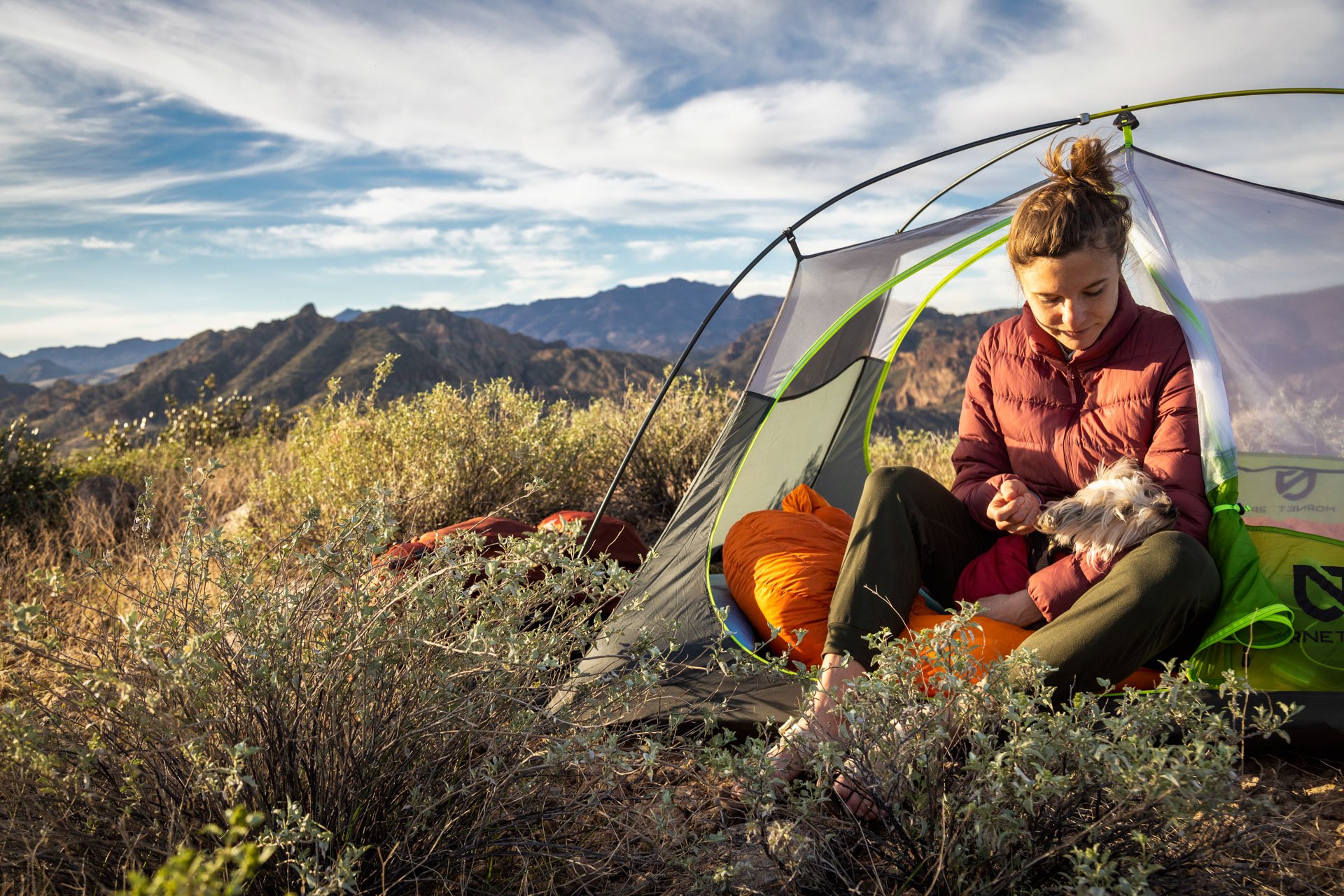
OUTDOOR
ADVENTURE
Featured Posts
HIKING
|
FLY FISHING
|
CAMPING
|
BACKPACKING
|
GEAR REVIEWS
|
HIKING | FLY FISHING | CAMPING | BACKPACKING | GEAR REVIEWS |
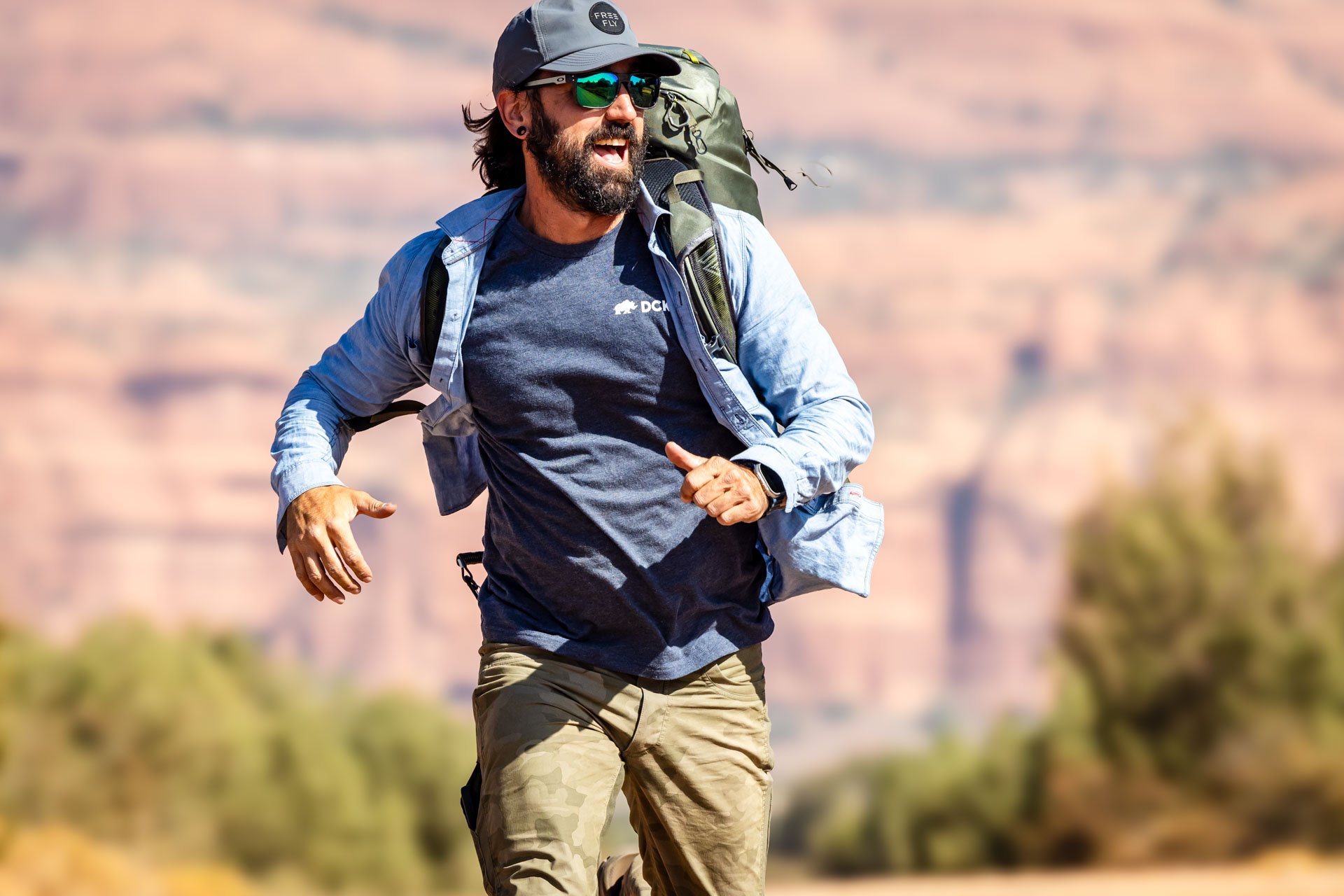
Best of
Top Clothing Brands of 2023
Discover unbeatable deals on Patagonia winter essentials at the REI Outlet sale! Get up to 40% off on jackets, parkas, and more.
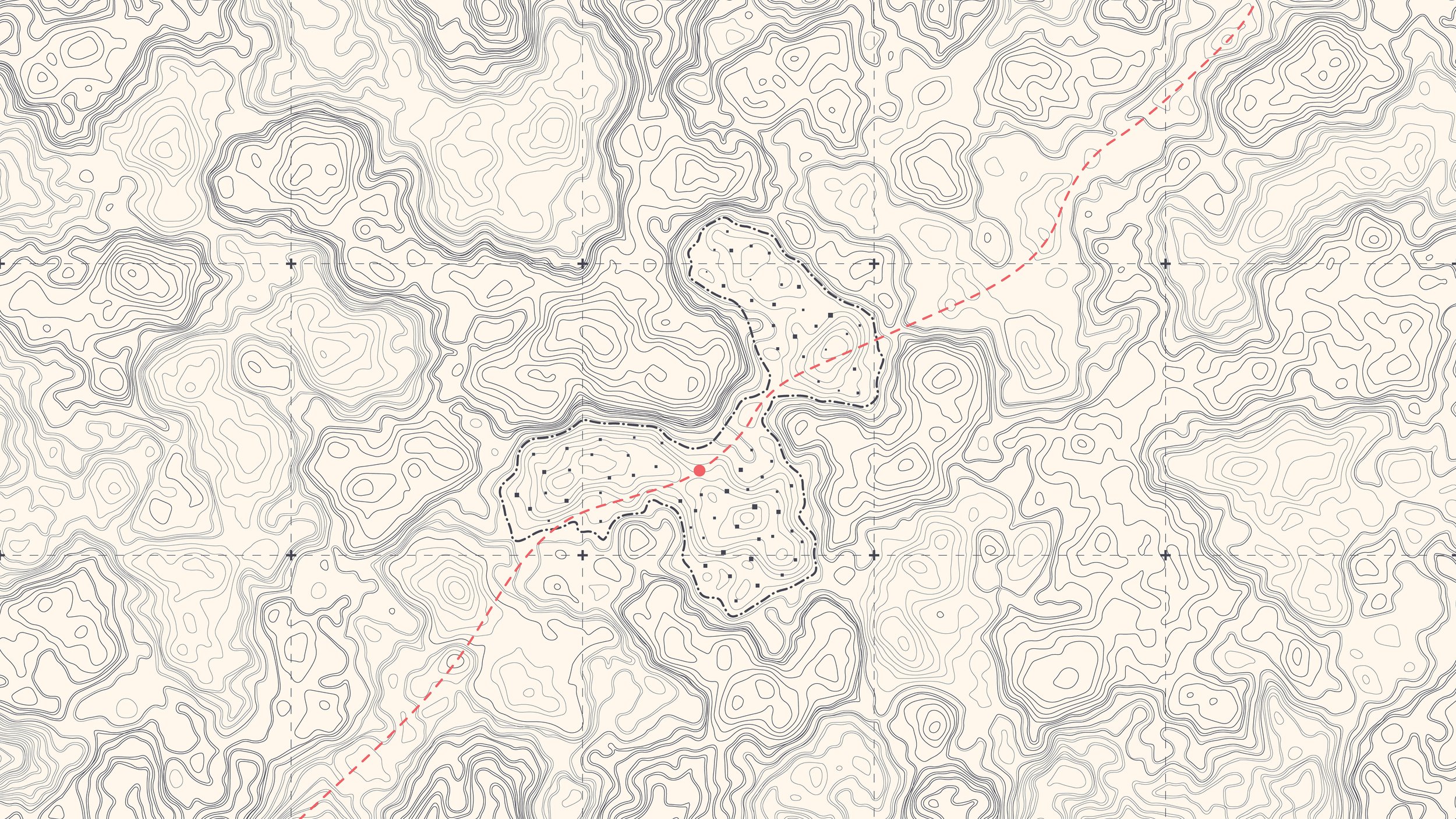
Subscribe to Our Newsletter
Sign up with your email address to receive news and updates.
Get in touch.
Just like in a hardcore round of intense pickleball, communication is key! Reach out with any questions, comments, beer recommendations, inquiries, critiques and jokes.












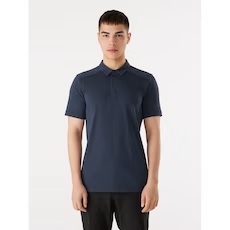
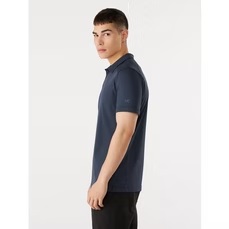












































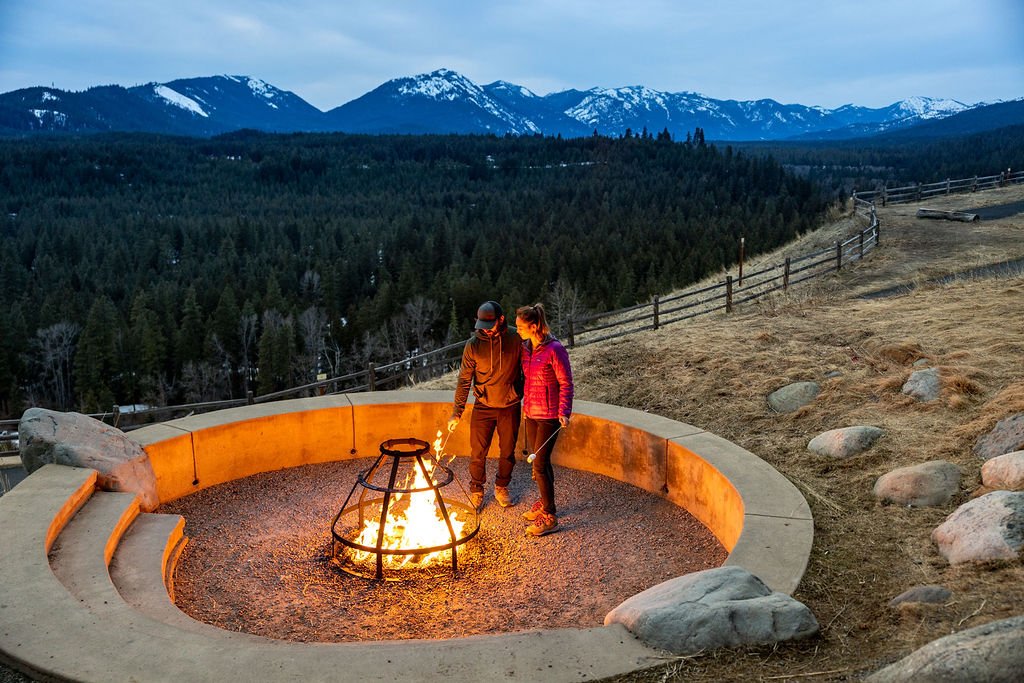























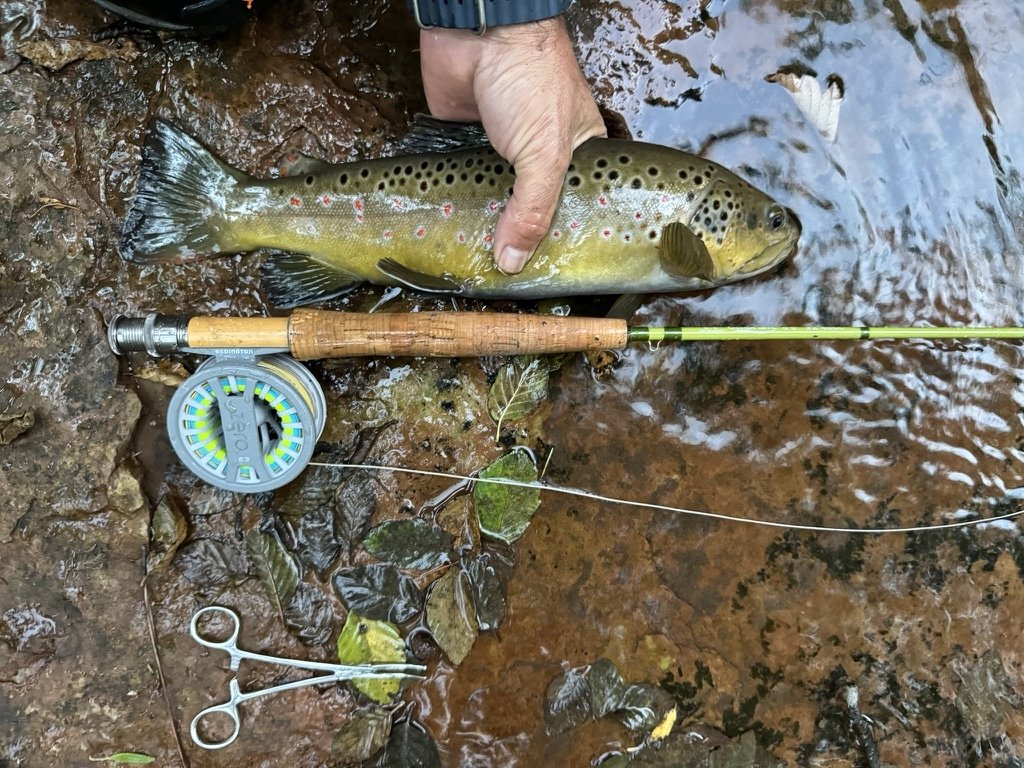

A well-equipped car camping kitchen setup makes outdoor cooking effortless. Here’s my essential gear list—powered coolers, Jetboil stoves, storage solutions, and more—to help you cook like a pro on the road.